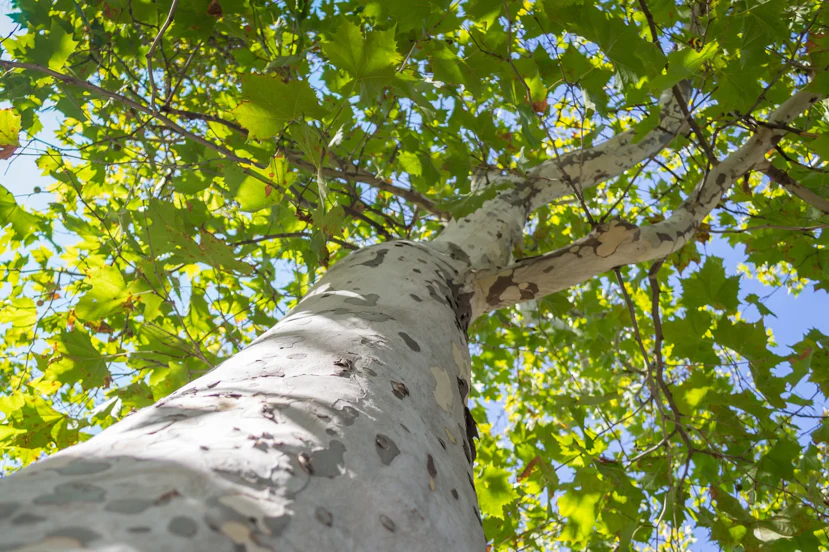
Overview of White Bark Trees
White bark trees are visually striking and serve various ecological roles. These trees, characterized by their unique bark coloration, can be found in diverse environments, from temperate forests to high mountain ranges. This article explores the different species of white bark trees, their ecological significance, and their uses in landscaping and forestry.
Characteristics of White Bark Trees
The white coloration of tree bark is primarily due to the presence of a compound called suberin, which reflects sunlight and protects the tree from heat. This adaptation allows trees to thrive in various climates, particularly those that experience extreme temperatures.
Common Species of White Bark Trees
Several species of trees are known for their distinctive white bark. Below are some notable examples:
- White Birch (Betula papyrifera)
- Native to North America.
- Known for its striking white bark that peels in thin layers.
- Grows well in moist soils and is often found near water bodies.
- Himalayan Birch (Betula utilis var. jacquemontii)
- Native to the Himalayas.
- Features bright white bark that peels off in sheets.
- Thrives in well-drained soil and is popular for ornamental use.
- Quaking Aspen (Populus tremuloides)
- Commonly found in North America.
- The bark is a pale white with dark markings.
- Known for its trembling leaves, which flutter in the wind.
- London Plane Tree (Platanus × acerifolia)
- A hybrid tree commonly used in urban settings.
- Its bark is mottled, revealing creamy white patches as it sheds.
- Tolerates pollution and poor soil conditions.
- Ghost Gum (Corymbia aparrerinja)
- Native to Australia.
- Known for its smooth, white bark that glows under sunlight.
- Grows rapidly and can reach heights of up to 30 meters.
- Whitebark Pine (Pinus albicaulis)
- Found in high-elevation areas of western North America.
- Plays a crucial role in its ecosystem by providing food for wildlife.
- Its seeds are rich in fat and protein, supporting various animal species.
Table of White Bark Tree Species
| Common Name | Scientific Name | Habitat | Notable Features |
|---|---|---|---|
| White Birch | Betula papyrifera | North America | Striking white bark, peels in layers |
| Himalayan Birch | Betula utilis var. jacquemontii | Himalayas | Bright white bark, ornamental use |
| Quaking Aspen | Populus tremuloides | North America | Pale bark with dark markings |
| London Plane Tree | Platanus × acerifolia | Urban areas | Mottled bark, pollution tolerant |
| Ghost Gum | Corymbia aparrerinja | Australia | Smooth white bark, rapid growth |
| Whitebark Pine | Pinus albicaulis | High elevations | Keystone species, nutritious seeds |
Ecological Importance
White bark trees play a vital role in their ecosystems:
- Habitat: They provide shelter and food for various wildlife species including birds, mammals, and insects.
- Soil Stabilization: Their root systems help prevent soil erosion on slopes and riverbanks.
- Water Regulation: By slowing down snowmelt, they help regulate water flow into streams and rivers.
Threats to White Bark Trees
Despite their resilience, many white bark tree species face significant threats:
- Climate Change: Rising temperatures affect their growth patterns and reproductive cycles.
- Pests and Diseases: Insects like the mountain pine beetle have devastated populations of whitebark pine due to warmer winters allowing them to thrive at higher elevations.
- Wildfires: Increased frequency and intensity of wildfires threaten these trees’ survival.
Uses of White Bark Trees
White bark trees are not only important ecologically; they also have numerous practical applications:
- Landscaping: Their aesthetic appeal makes them popular choices for gardens and parks.
- Timber Production: Species like birch are valued for their wood quality used in furniture making and construction.
- Cultural Significance: Many indigenous cultures utilize parts of these trees for traditional practices and ceremonies.
FAQ Section
What types of trees have white bark?
Common types include birches (like the paper birch), aspens, plane trees, ghost gums, and whitebark pines.
Why do some trees have white bark?
The white coloration helps reflect sunlight, protecting the tree from heat damage while aiding photosynthesis.
Are white bark trees good for wildlife?
Yes, many species provide essential food sources for animals; for example, the seeds of whitebark pine are a critical food source for bears and birds.
How do I care for a white bark tree?
Ensure proper watering during dry spells, provide adequate space for growth, and monitor for pests or diseases.
Where can I find more information about white bark trees?
For detailed information on specific species or ecological roles, you can visit Wikipedia or relevant government resources on forestry conservation.
Conclusion
White bark trees are not only visually captivating but also play crucial roles within their ecosystems. Understanding their characteristics, ecological importance, threats they face, and practical uses can enhance our appreciation for these remarkable trees. As we face environmental challenges such as climate change and habitat loss, it becomes increasingly important to protect these vital species for future generations.


